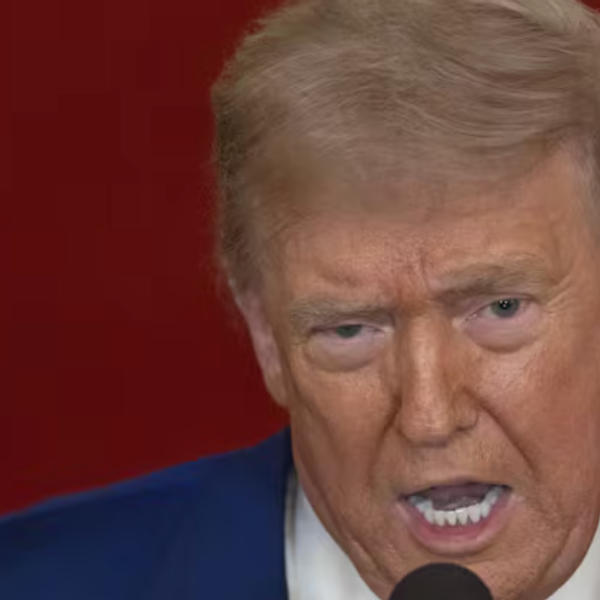
Nov. 18 (Bloomberg) — The Patient Protection and Affordable Care Act is floundering.
Conservatives who take satisfaction in that should be careful not to get ahead of themselves. The rollout problems — however serious and continuing — shouldn’t be confused with the law’s outright collapse. Even the administration’s recent capitulation (however humiliating) allowing plans to be “uncanceled” is a setback, not a surrender.
The reality is that large constituencies are in place to work to preserve Obamacare. States that have embraced the law’s Medicaid expansion — about half — will fight tooth and nail to keep huge new federal subsidies in place. And the conservatives who are lambasting the disastrous rollout should realize that the electorate that is uninsured, getting large subsidies and generally older will also fight to keep their newly minted policies.
Republicans would have to run the table in 2014 (hold the House, take the Senate) and win the presidency in 2016 to have any serious chance of repealing the law over strong Democratic opposition. In the interim, the administration has two more years to implement and prop it up.
What strategy, then, would move us closer to the patient- and consumer-focused health care system that conservatives desire while also recognizing the facts on the ground?
The answer might be simple: Propose changes that will make plans more affordable and drive enhanced competition among insurers and providers. In other words, make Obamacare a Trojan horse for conservative health- are reform. The administration of President Barack Obama has quietly introduced regulatory decisions that have made the exchanges a viable market for high-deductible, health-savings-account-eligible health plans.
Shortly after the law passed, it looked like the administration would use regulatory rule-making to kill health savings accounts. But subsequent rules clarified that HSA-qualified plans were actually the default structure for bronze plans on the exchanges. (Some silver plans qualify, too.)
Far from being driven to extinction, high-deductible, HSA-eligible plans have an opportunity to capture significant new market share on the exchanges.
Based on data available for about 85 percent of exchange plans, about 77 percent have deductibles of more than $1,250 and qualify under Internal Revenue Service rules for a health savings account. For a 27-year-old purchasing coverage, the median HSA-eligible plan costs about $238 a month and typically comes with a deductible of about $3,600. The median plan without a high deductible, however, costs almost 30 percent more ($310) for a 27-year-old, though it has a significantly lower deductible (about $600).
Over the course of a year, the choice of an HSA plan can lead to significant savings. Here’s why: The typical 20-something with insurance spends a median of $770 annually on health care (excluding premiums and over-the-counter drugs). Opting for an HSA-eligible plan costing $238 a month ($2,856 a year), the median 20-something ends up spending $3,626 in one year on health care ($770 plus $2,856). However, with a traditional plan, total spending jumps to $4,320 in one year ($600 in out-of-pocket spending plus $3,720 in premiums). In other words, the HSA plan holder comes out about 20 percent ($694) ahead. That savings can then be funneled into an HSA or other spending.
There’s more. HSAs use pretax dollars. Assuming that the average 20-something who falls roughly into the 15 percent tax bracket covers her routine out-of-pocket health expenses with funds from her tax-free HSA account, she saves an additional $115. That brings the true net savings of a high-deductible health plan to $809. For a young person starting out with very low expected health spending, those savings can be invested in a moderate-yield index fund to build health equity over time (Vanguard’s S&P exchange-traded fund has a three-year average return of 16.26 percent).
And there’s much more that can be done to make HSAs even more effective and attractive for all Americans.
First, encourage more competition between insurance plans by repealing Obamacare’s community rating provisions (which were designed to make insurance less expensive for the sick and elderly) -– or at least expanding the age rating bands (limits on how much more insurers can charge the elderly than the young -– this raises costs for the young and reduces them for the elderly) from 3-1 to 5-1. Then, high-risk pools for the uninsured with costly medical conditions should be fully funded, capping premiums at 150 percent to 200 percent of standard premiums, with means-tested federal subsidies for low-income Americans. This would ensure coverage for uninsured Americans with pre-existing conditions, without driving up prices for younger and healthier applicants.
Next, offer true consumer choice in terms of benefits and coverage. Obamacare requires coverage of several essential health benefits that drive up cost. Instead, basic coverage should focus on core health benefits such as wellness and prevention, physician care, hospital coverage and prescription drugs. Plans should also be allowed to offer higher deductibles to anyone younger than 35 or even 40.
Last but not least, catastrophic plans should also be eligible for subsidies. The savings accrued from picking plans that are cheaper than the silver benchmark should be funneled into HSAs to offset future health expenses. This would provide a powerful incentive for Americans to gravitate into catastrophic plans, slow health-care inflation and encourage providers to become more transparent in pricing their services.
Conservatives aren’t going to repeal or replace Obamacare anytime soon. But they can propose smart fixes that build on the HSA-friendly exchange architecture to make the law more consumer- and patient-friendly. Reform from the inside can set the stage for even bigger changes in the not-too-distant future.
(Paul Howard is a senior fellow and director of the Center for Medical Progress at the Manhattan Institute. Yevgeniy Feyman is a fellow at the Manhattan Institute’s Center for Medical Progress.)
Photo: House GOP Leader via Flickr








